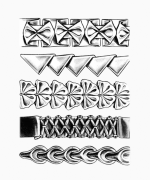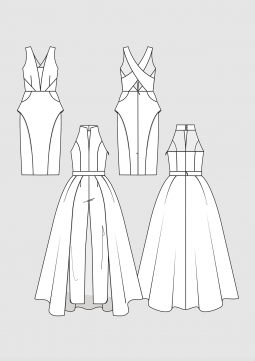Sewing Flower Appliqués
Deutsch
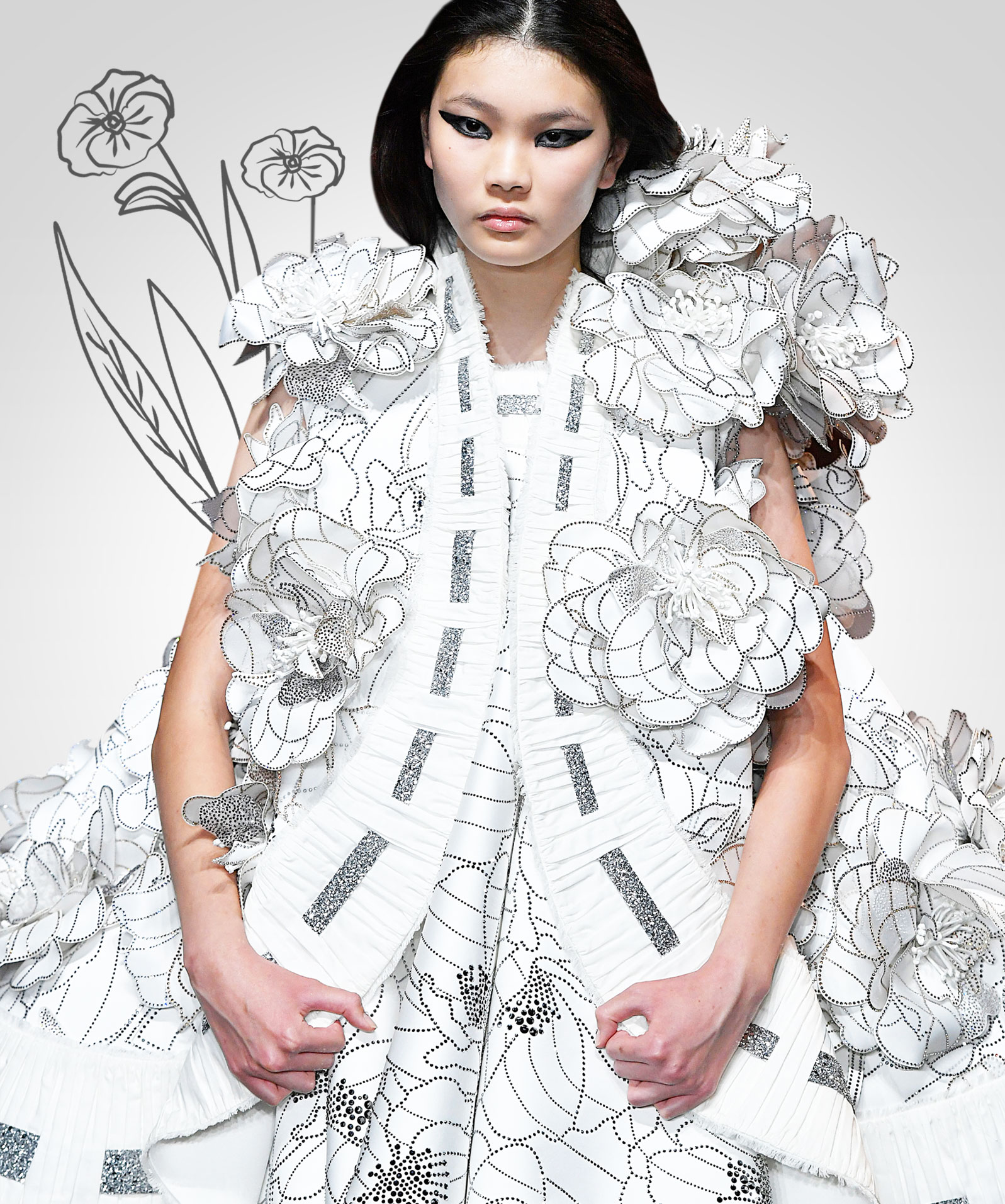 (Photo Credit: © CATWALKPIX.COM)
(Photo Credit: © CATWALKPIX.COM)
Sometimes on a simple dress is missing a little detail to give it that certain something. Appliqués in the form of blossoms and floral ornaments offer a nice possibility for decoration on clothes. They are easy to make, are particularly versatile and can be made of different materials. Hand-sewn flowers made of fabric transform clothes into small works of art. Growing roses on floor-length dresses, wild vines climbing over puffed sleeves and even sandals carrying flowers. Flower prints and other floral eye-catchers bring a touch of romance and nostalgia into the wardrobe and are the absolute trend, especially in summer. Here we show different methods for the sewing of textile applications in shape of flowers.
Content
- Instructions Appliqués Bouquet of Flowers
- Instructions Appliqués Flower Calyx
- Instructions Appliqués Wrapped Rose
- Instructions Appliqués Filled Rose
For the flower appliqués the selection of the thread for the leaves depends on the size of the leaf. For small leaves a thin thread is best. If a thicker thread is needed, a thinner thread can be doubled in the needle, conversely, twist the thicker thread apart.
Expert`s Tipp from Therese Walter: You can find threads with decorative effect even in knitting rooms. My favourites are shiny yarn “Decor” and overlock yarn “Glamour” from Madeira. You will see, there is a wide selection of embroidery and artificial silk in specialist shops. The finished embroidered leaves can be additionally decorated with pearls. To create a three-dimensional effect, you need a thin handicraft wire and a textile glue for fixing. Feathers, glass beads or semi-precious stones complete your range of materials.
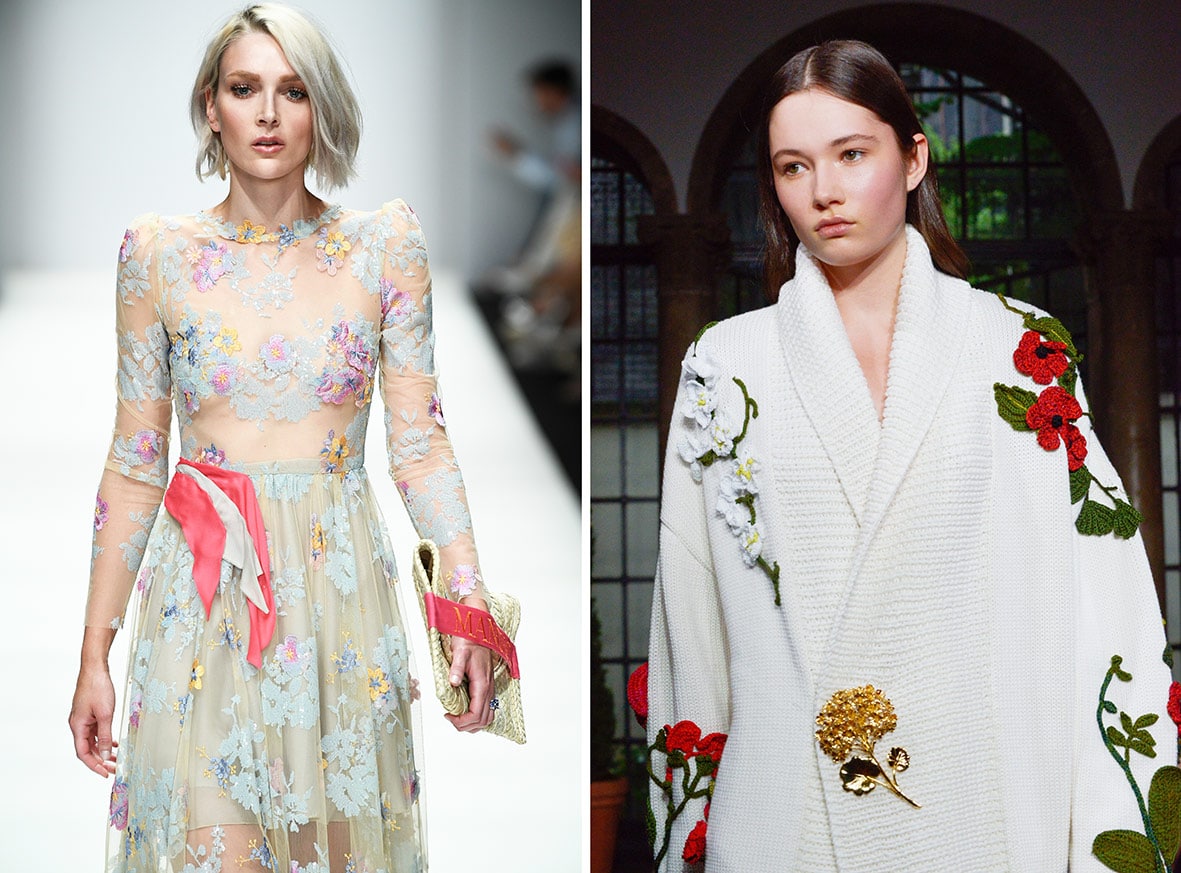
Instructions Appliqués Bouquet of Flowers
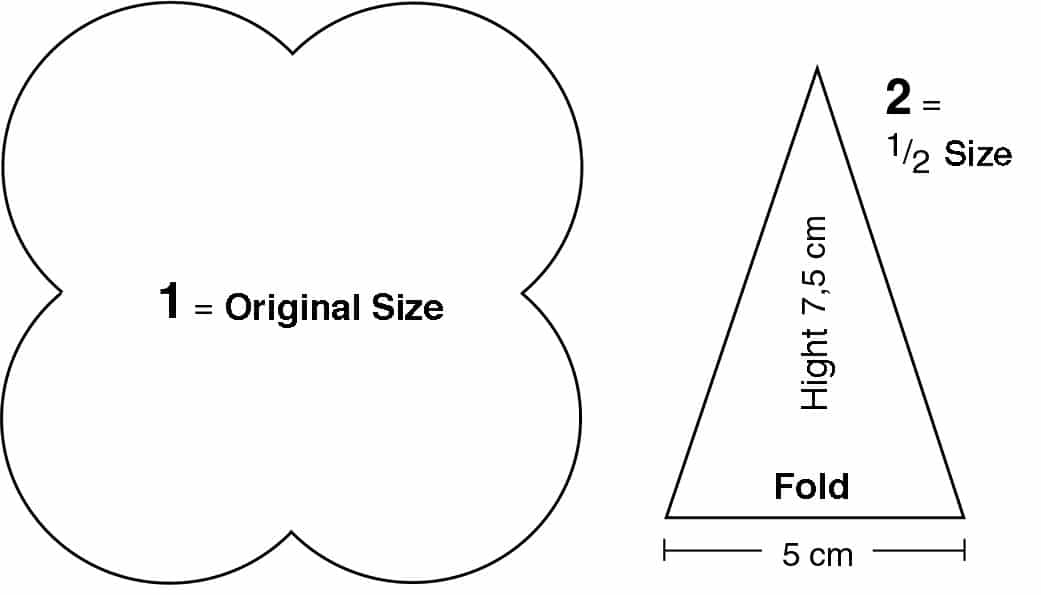
- Fig. 1 shows the pattern in original size. For the petals the organza is taken in double. This way the finished petals stay better in shape. They are wound narrowly on top of each other with zigzag stitches in bright colours. Special machines simplify the work.Two leaves – in the same colour border – are placed on top of each other in an alternating pattern, held in the middle with irregular folds and sewn on. A pearl covers and decorates the stitching.
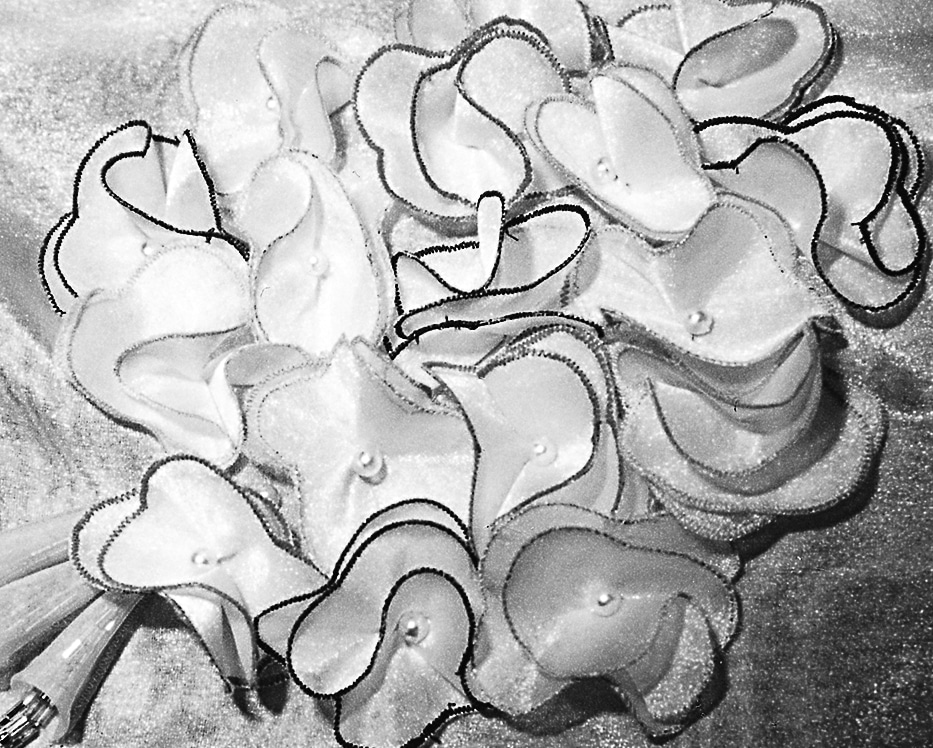
- Finally, cones made of contrasting organza with tassels look pretty (finished flower bouquet). Take an approx. 15 cm wide diagonal strip, fold it in half and cut out three triangles. Put the edges on each other and you have the cones. They are sewn on by hand and finished with drip beads or pearl tassels.
Instructions Appliqués Flower Calyx
The two basic shapes of this blossom are circle and triangle. Made of very light material like organdy, with only one layer of fabric and trimmed at the edges, it is particularly airy. If you want the flower to have more stability, you have to take each circle twice. You may also need organza as an inlay, e.g. for chiffon. Please note that the upper and lower sides are the same, as the material is visible.
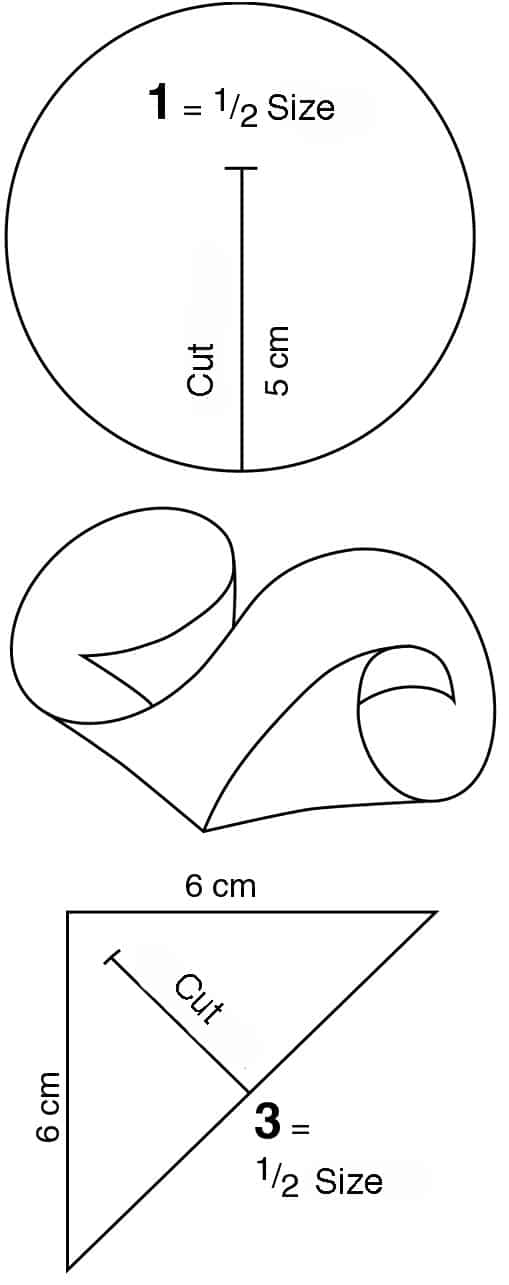
- Figure 1 shows the circle. It has a diameter of 8 cm and is opened in the middle, along the grain line. Fig. 2 This gives the possibility to roll the two halves in different directions. At the lower end the resulting cone is held. Several cones sewn together resulting in the flower. When the pattern has been drawn, the lines are trimmed and cut out with machine embroidery thread and small, tight stitches. Fig. 3 The triangle is worked in the same way. The centre – see fig. – is opened to just under a centimetre. The small remaining corner is taken between the circles.
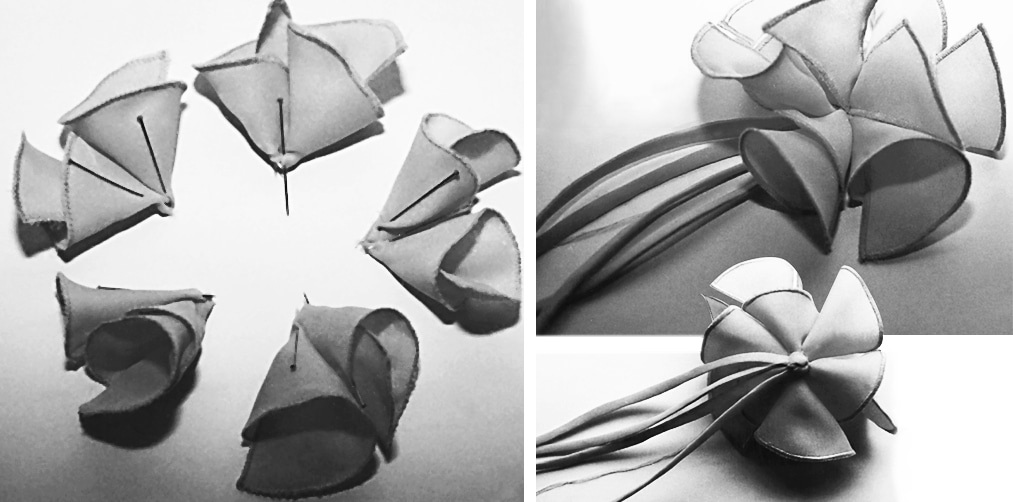
Fig. 4 shows the finished blossom with three circles and a triangle. The flower can be supplemented and modified with tube covers as stems or the edges can be trimmed with yarn in contrasting colours. If we use five circles, the triangle can be omitted.
Instructions Appliqués Wrapped Rose
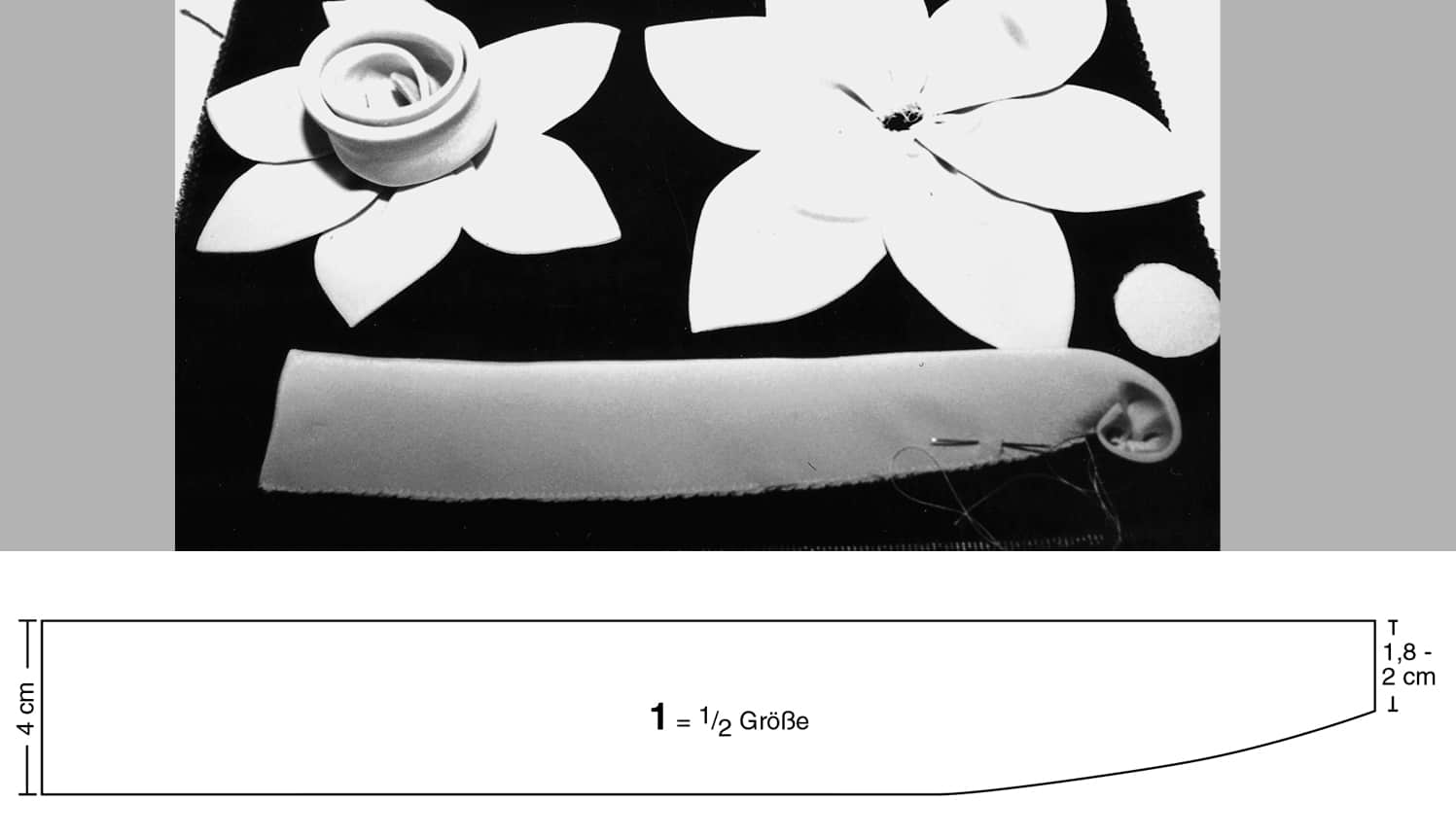
- Made from soft crêpe de chine, this rose is particularly soft and gentle. Underlaid with organza, the rose keeps its shape better. A diagonal strip is used for the flower. The length and width of the cutting determines the desired, finished size of the rose. The rose is cut into strips 30 cm long and 8 cm wide. The organza strip must also be cut diagonally. It is stapled underneath. Fig. 1 The double strip is broken lengthwise and turned over at both ends. One side remains in the existing width, the other side is cut along the length – 1.8 cm to 2 cm – working process In order not to get too much thread material, only a sparing amount of trimming is done. Two small leaves form the bud.
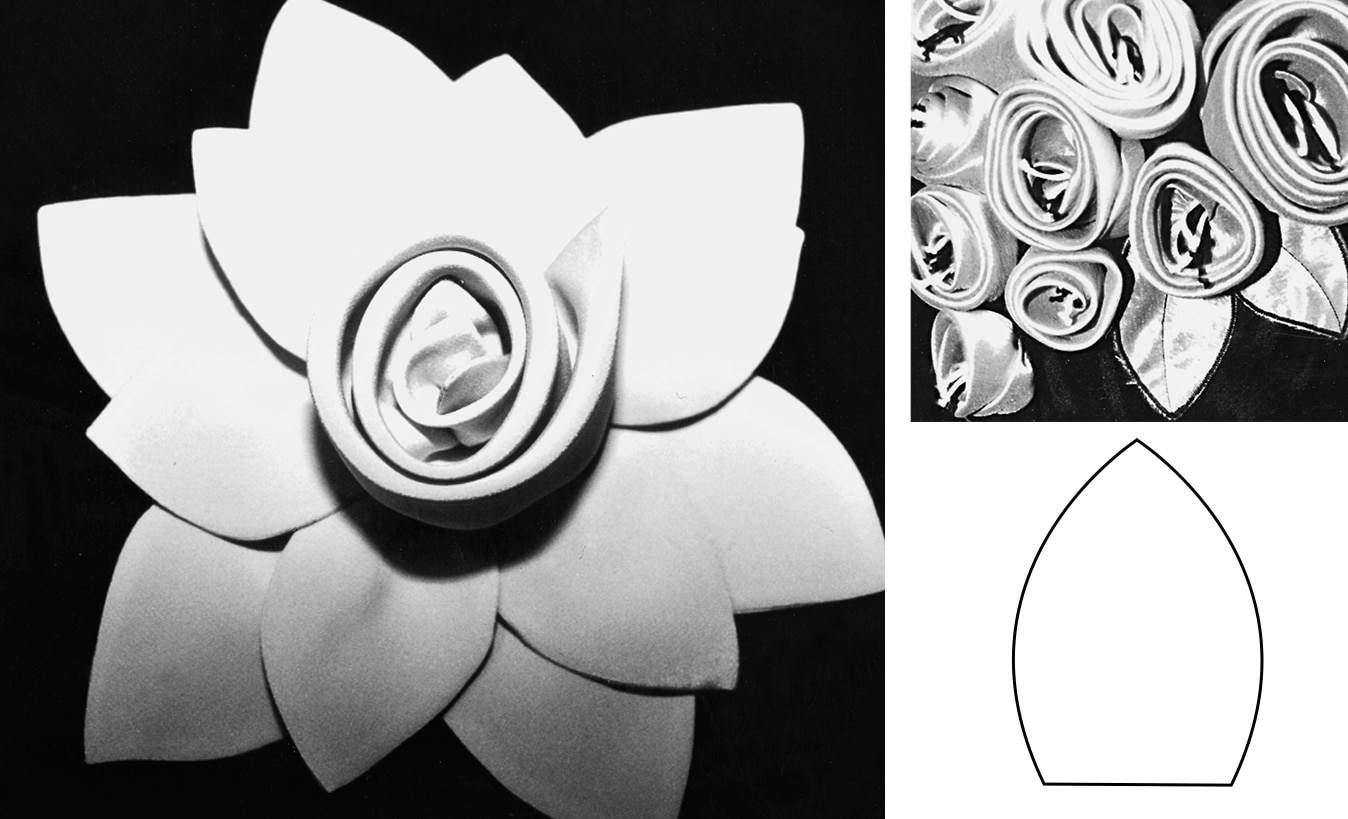
- The lower right figure shows the original size of these leaves. Sewing: The rose is rolled from the narrow side of the strip. The small leaves are taken in the middle. The width is held at the bottom with small row pleats. A leaf wreath serves as a supplement and depending on the intended use. The flower is placed in the single or double leaf wreath and trimmed.
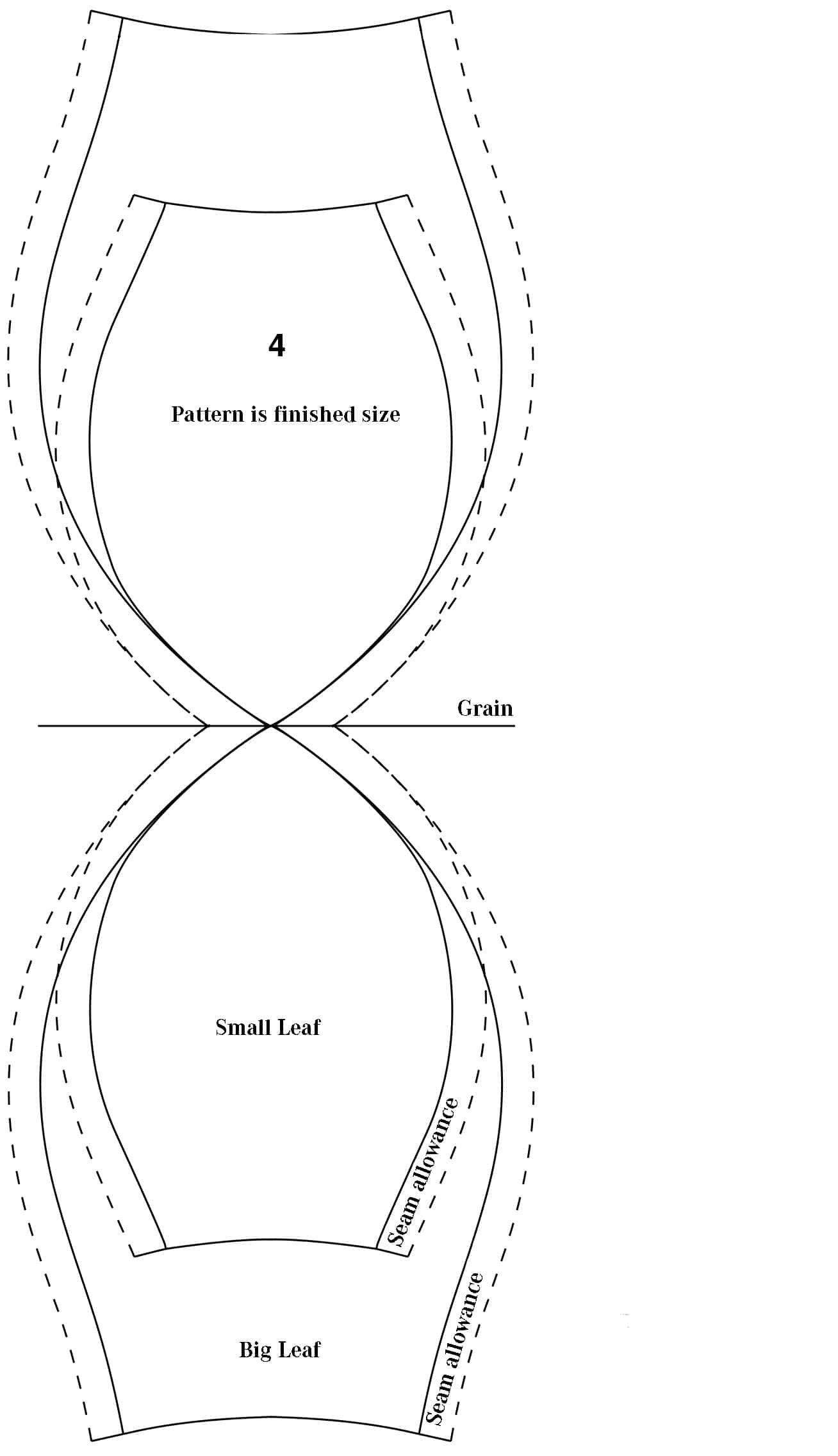
- An unusually clean and durable blade tip is obtained if the cutting is done with the fabric in a fold.
Instructions Appliqués Filled Rose
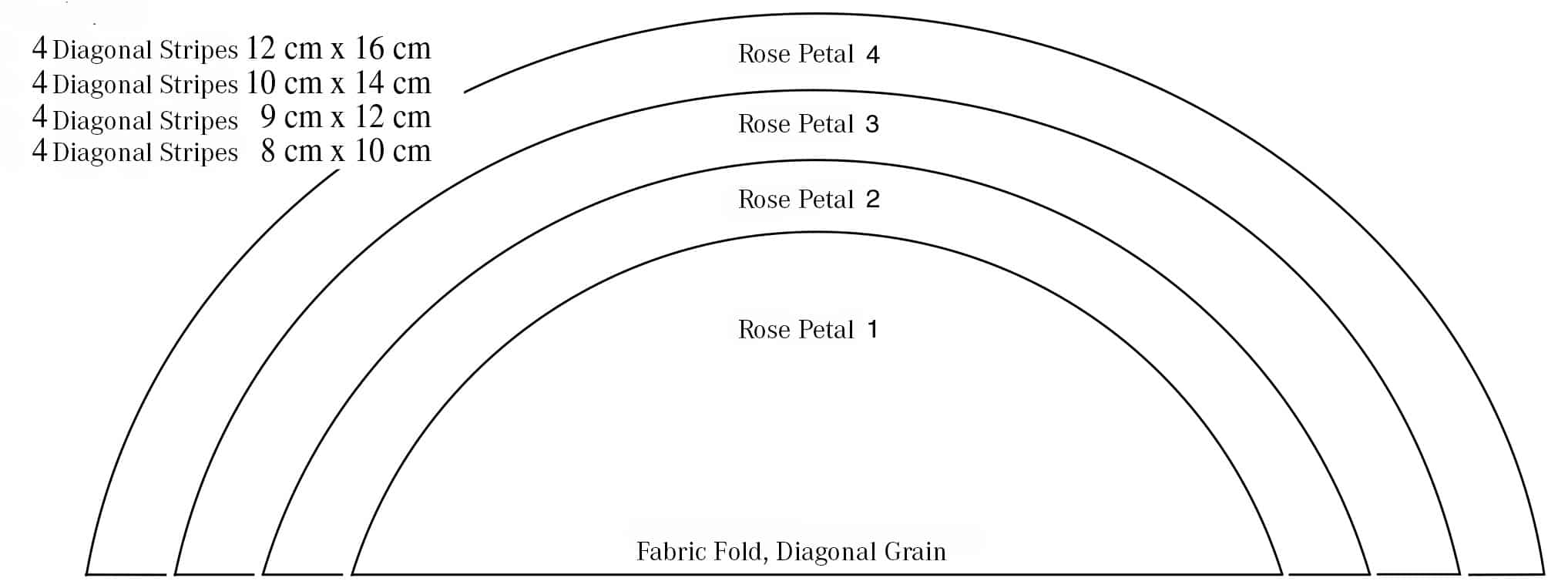
- Duchesse is very well suited for this rose. It is compact and relatively insensitive. All leaves are cut double in the diagonal grain. The diagonal strips are folded and slightly ironed. Now they are cut out according to the given pattern.
Sewing
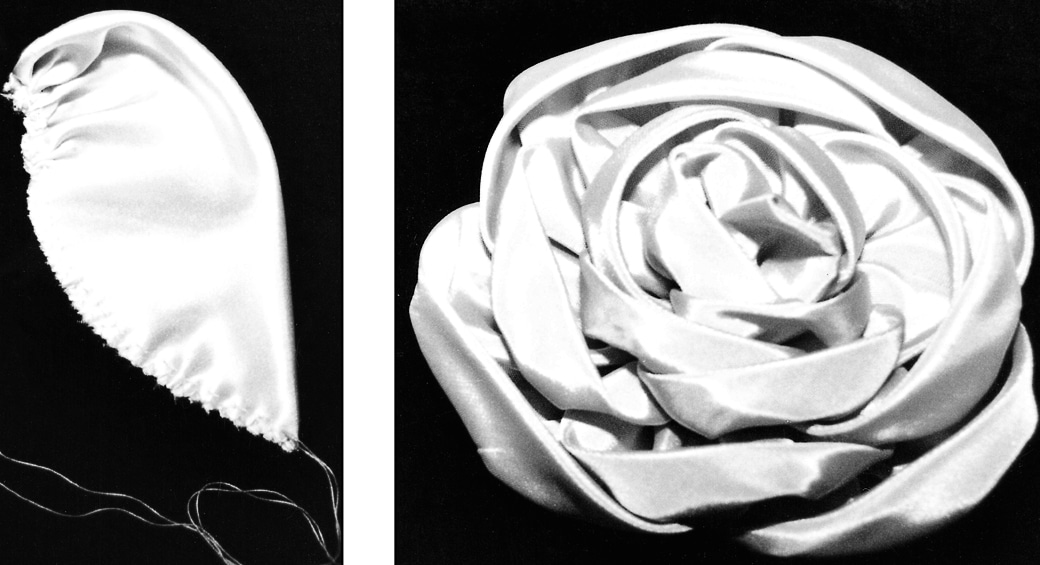
- Curl the leaves at the rounded edges. Leave threads to hang for further sewing. One of the smallest leaves is twisted together towards the centre of the blossom. Sew all other leaves sorted according to size and staggered. Work flat at the bottom and trim with the same fabric. With a pin, this rose can be worn with different clothes.
Instructions for pattern construction and patterns for sewing flower dresses can be found in our online shop.


